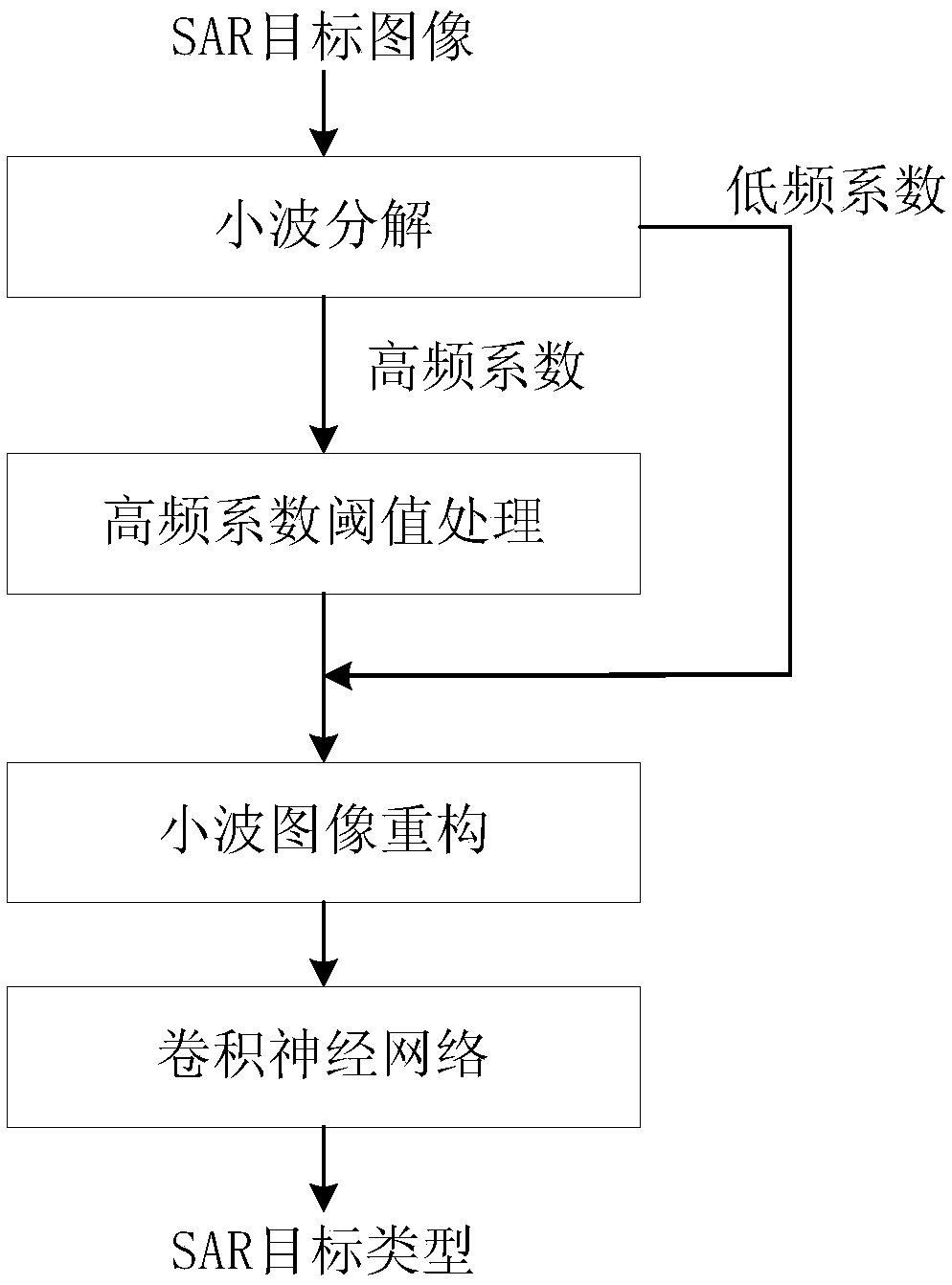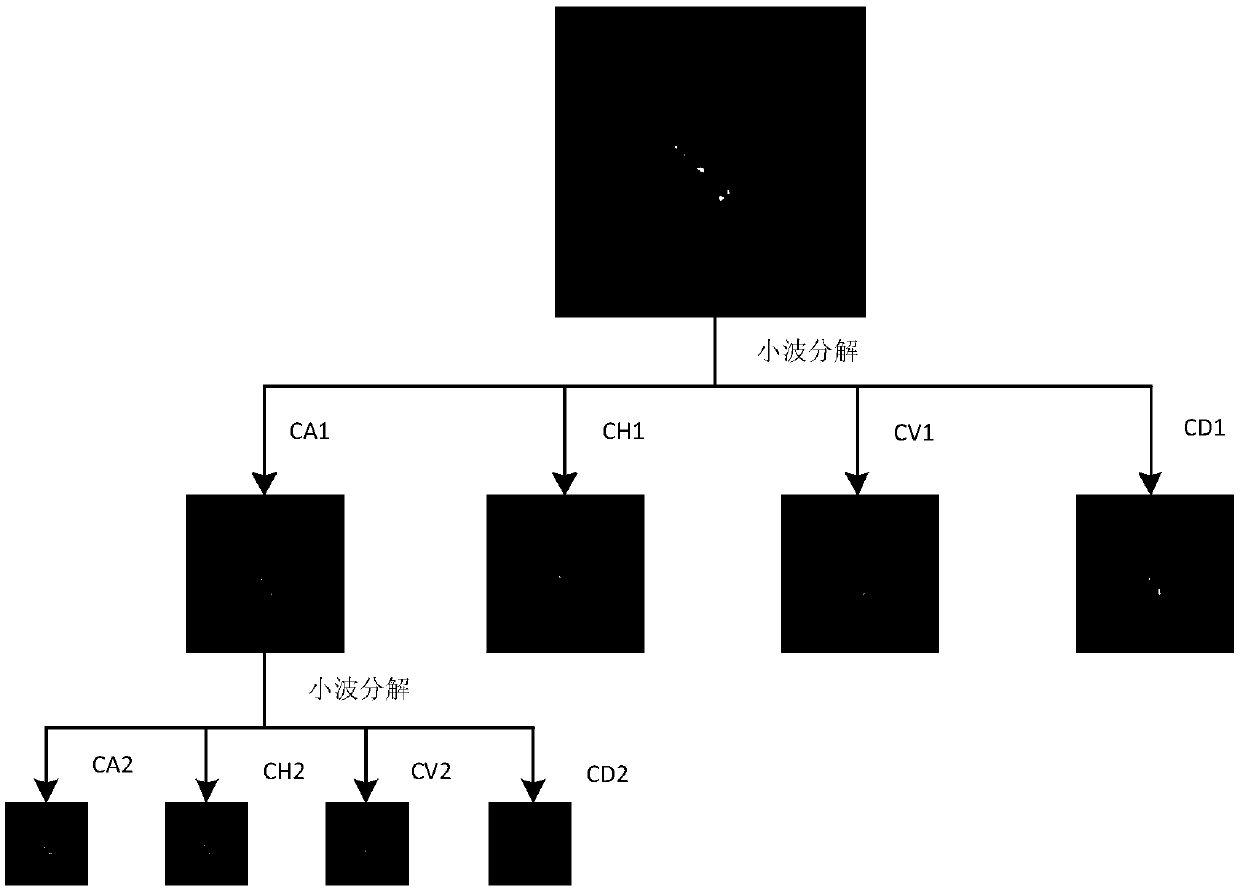SAR image target recognition method based on wavelet threshold denoising combined with convolutional neural network
A technology of convolutional neural network and wavelet threshold, which is applied in target recognition, image processing, synthetic aperture radar image target recognition, and feature extraction, can solve the problem of not effectively removing image speckle noise and retaining target outline information, etc. The effect of target recognition effect
- Summary
- Abstract
- Description
- Claims
- Application Information
AI Technical Summary
Problems solved by technology
Method used
Image
Examples
Embodiment Construction
[0040] Below in conjunction with accompanying drawing and embodiment the present invention will be further described
[0041] In this embodiment, the MSTAR data set is used as the experimental data set. The MSTAR data set is a SAR image data set published by the MSTAR program for scientific research, and it is a data set commonly used to scientifically evaluate the performance of SAR automatic target recognition systems. The MSTAR data set includes a total of 10 types of ground tactical targets, namely BTR70, D7, ZSU_234, BRDM_2, T72, BTR_60, 2S1, ZIL131, T62 and BMP2. Table 1 shows the training and testing examples of 10 types of targets.
[0042]
[0043] Table 1
[0044] refer to Figure 1 to Figure 10 , a wavelet threshold noise reduction combined with a convolutional neural network SAR image target recognition method, comprising the following steps:
[0045] Step 1, wavelet decomposition of SAR target image
[0046] Adjust the training samples uniformly to a magni...
PUM
 Login to View More
Login to View More Abstract
Description
Claims
Application Information
 Login to View More
Login to View More - R&D
- Intellectual Property
- Life Sciences
- Materials
- Tech Scout
- Unparalleled Data Quality
- Higher Quality Content
- 60% Fewer Hallucinations
Browse by: Latest US Patents, China's latest patents, Technical Efficacy Thesaurus, Application Domain, Technology Topic, Popular Technical Reports.
© 2025 PatSnap. All rights reserved.Legal|Privacy policy|Modern Slavery Act Transparency Statement|Sitemap|About US| Contact US: help@patsnap.com



